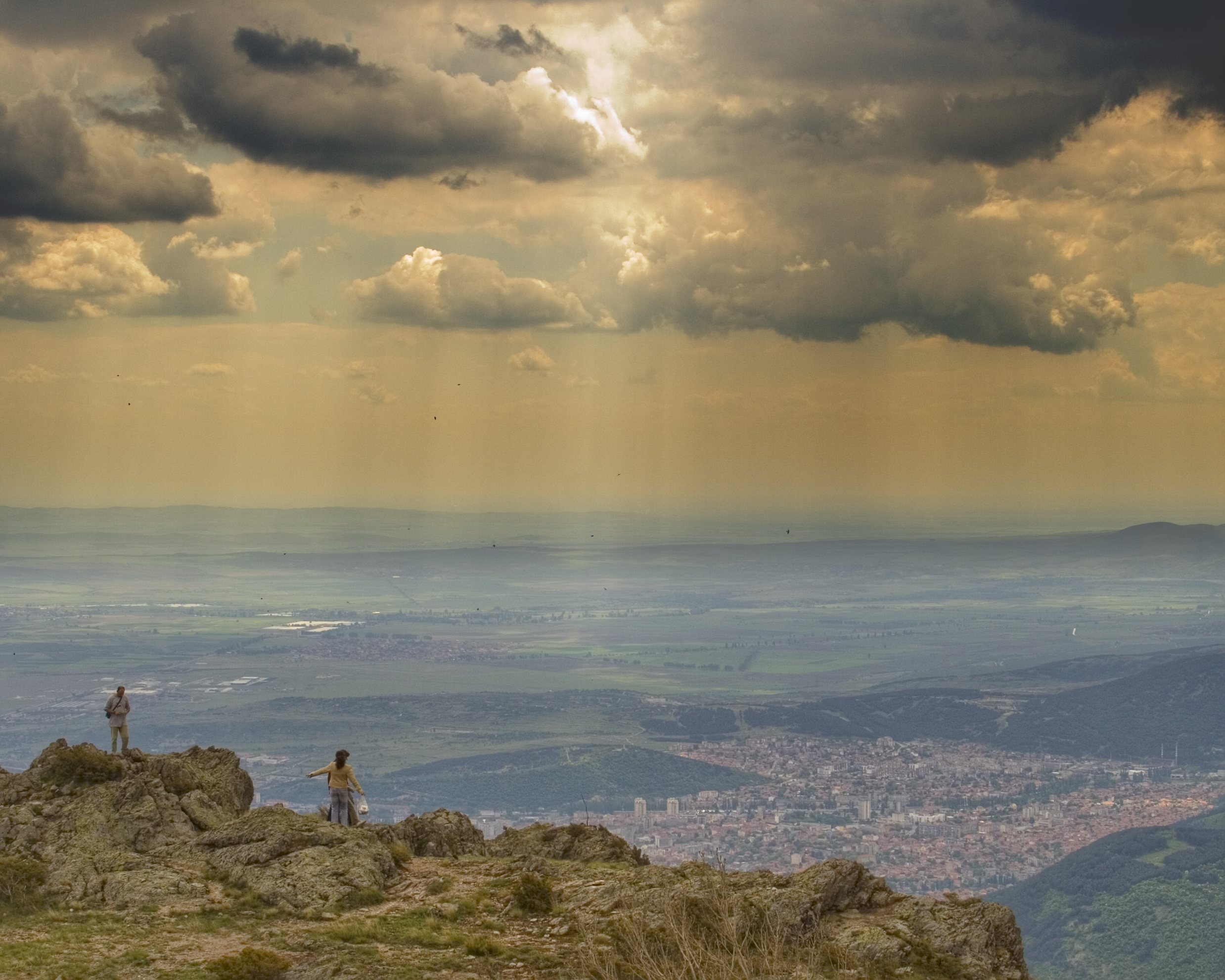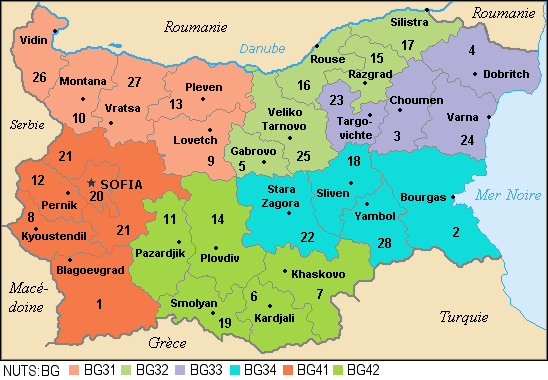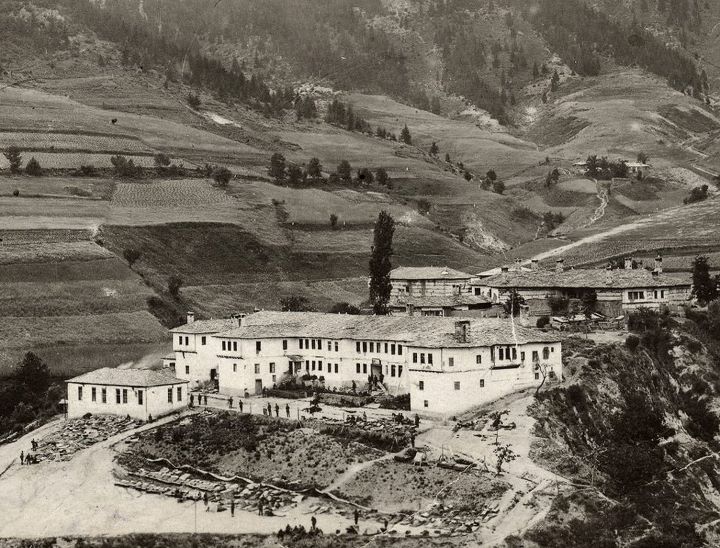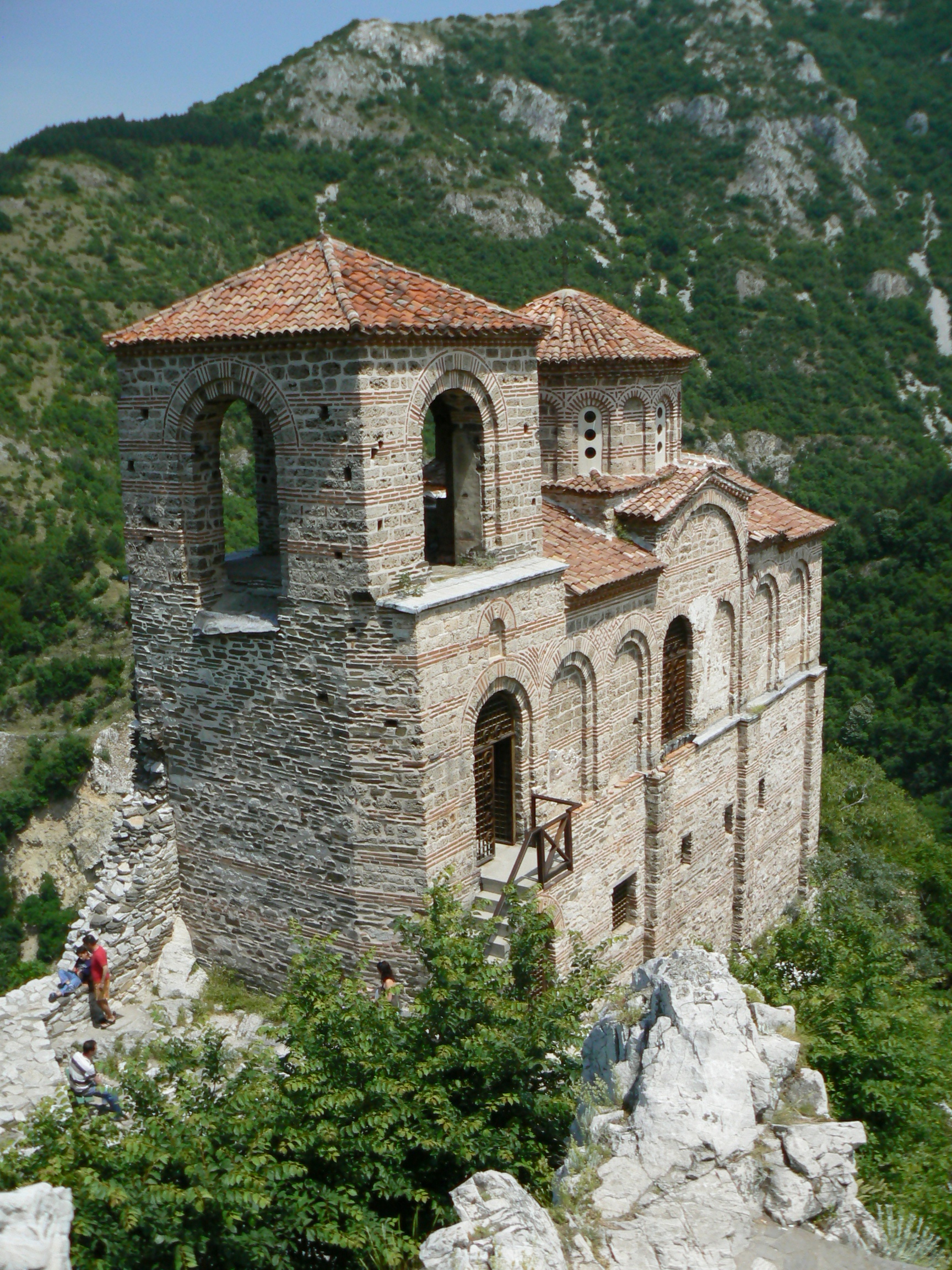|
Bulgarian Thrace
Northern Thrace or North Thrace ( bg, Северна Тракия, as opposed to Western Thrace and East Thrace to the south; tr, Kuzey Trakya; el, Βόρεια Θράκη), also called Bulgarian Thrace, constitutes the northern and largest part of the historical region of Thrace. It is located in Southern Bulgaria and includes the territory south of the Balkan Mountains and east of the Mesta River, bordering Greece and Turkey in the south and the Black Sea in the east. It encompasses Sredna Gora, the Upper Thracian Plain and 90% of the Rhodopes. The climate ranges from continental to transitional continental and mountainous. The highest temperature recorded in Bulgaria occurred here: it was at Sadovo in 1916. The main rivers of the region are the Maritsa and its tributaries. Notable cities include Plovdiv, Burgas, Stara Zagora, Sliven, Haskovo, Yambol, Pazardzhik, Asenovgrad, Kardzhali, Dimitrovgrad, Kazanlak and Smolyan. Northern Thrace has an area of 42,073 km2. The Ottoman ... [...More Info...] [...Related Items...] OR: [Wikipedia] [Google] [Baidu] |
Sliven
Sliven ( bg, Сливен ) is the eighth-largest city in Bulgaria and the administrative and industrial centre of Sliven Province and municipality in Northern Thrace. Sliven is famous for its heroic Haiduts who fought against the Ottoman Turks in the 19th century and is known as the "City of the 100 Voyvodi", a Voyvoda being a leader of Haiduts. The famous rocky massif Sinite Kamani (Сините камъни, "The Blue Rocks") and the associated national park, the fresh air and the mineral springs offer diverse opportunities for leisure and tourism. Investors are exploring the opportunity to use the famous local wind (Bora) for the production of electricity. Another point of interest and a major symbol of the city as featured on the coat of arms, is the more than thousand-year-old Stariyat Briast (Старият Бряст, "The Old Elm"), a huge Smooth-leaved Elm in the center of the city. During Ottoman rule, Turkish officials used to hang Bulgarian revolutionaries on it ... [...More Info...] [...Related Items...] OR: [Wikipedia] [Google] [Baidu] |
Burgas Province
Burgas Province ( bg, Област Бургас, translit=Oblast Burgas, formerly the Burgas okrug) is a province in southeastern Bulgaria, including the southern Bulgarian Black Sea Coast. The province is named after its administrative and industrial centre, the city of Burgas, the fourth biggest town in the country. It is the largest province by area, embracing a territory of Bulgarian Provinces area and population 1999 — National Center for Regional Development — page 90-91 that is divided into 13 municipalities with a total population, as of December 2009, of 422,319 inhabitants. [...More Info...] [...Related Items...] OR: [Wikipedia] [Google] [Baidu] |
Provinces Of Bulgaria
The provinces of Bulgaria ( bg, области на България, oblasti na Bǎlgarija) are the first-level administrative subdivisions of the country. Since 1999, Bulgaria has been divided into 28 provinces ( bg, области, links=no – ''oblasti;'' singular: – ''oblast''; also translated as "regions") which correspond approximately to the 28 districts (in bg, links=no, окръг – ''okrug, okrǎg'', plural: – ''okrǎzi''), that existed before 1987. The provinces are further subdivided into 265 municipalities (singular: – ''obshtina'', plural: – ''obshtini''). Sofia – the capital city of Bulgaria and the largest settlement in the country – is the administrative centre of both Sofia Province and Sofia City Province (Sofia-Grad (toponymy), grad). The capital is included (together with three other cities plus 34 villages) in Sofia Capital Municipality (over 90% of whose population lives in Sofia), which is the sole municipality comprising Sofia City ... [...More Info...] [...Related Items...] OR: [Wikipedia] [Google] [Baidu] |
Principality Of Bulgaria
The Principality of Bulgaria ( bg, Княжество България, Knyazhestvo Balgariya) was a vassal state under the suzerainty of the Ottoman Empire. It was established by the Treaty of Berlin in 1878. After the Russo-Turkish War ended with a Russian victory, the Treaty of San Stefano was signed by Russia and the Ottoman Empire on 3 March 1878. Under this, a large Bulgarian vassal state was agreed to, which was significantly larger: its lands encompassed nearly all ethnic Bulgarians in the Balkans, and included most of Moesia, Thrace and Macedonia, stretching from the Black Sea to the Aegean. However, the United Kingdom and Austria-Hungary were against the establishment of such a large Russian client state in the Balkans, fearing it would shift the balance of power in the Mediterranean. Due to this, the great powers convened and signed the Treaty of Berlin, superseding the Treaty of San Stefano, which never went into effect. This created a much smaller principalit ... [...More Info...] [...Related Items...] OR: [Wikipedia] [Google] [Baidu] |
Eastern Rumelia
Eastern Rumelia ( bg, Източна Румелия, Iztochna Rumeliya; ota, , Rumeli-i Şarkî; el, Ανατολική Ρωμυλία, Anatoliki Romylia) was an autonomous province (''oblast'' in Bulgarian, ''vilayet'' in Turkish) in the Ottoman Empire, created in 1878 by the Treaty of Berlin and ''de facto'' ended in 1885, when it was united with the Principality of Bulgaria, also under Ottoman suzerainty. It continued to be an Ottoman province ''de jure'' until 1908, when Bulgaria declared independence. Ethnic Bulgarians formed a majority of the population in Eastern Rumelia, but there were significant Turkish and Greek minorities. Its capital was Plovdiv (Ottoman ''Filibe'', Greek ''Philippoupoli''). The official languages of Eastern Rumelia were: Bulgarian, Greek and Ottoman Turkish. History Eastern Rumelia was created as an autonomous province within the Ottoman Empire by the Treaty of Berlin in 1878. The region roughly corresponded to today's southern Bulgaria, wh ... [...More Info...] [...Related Items...] OR: [Wikipedia] [Google] [Baidu] |
Ottoman Empire
The Ottoman Empire, * ; is an archaic version. The definite article forms and were synonymous * and el, Оθωμανική Αυτοκρατορία, Othōmanikē Avtokratoria, label=none * info page on book at Martin Luther University) // CITED: p. 36 (PDF p. 38/338) also known as the Turkish Empire, was an empire that controlled much of Southeast Europe, Western Asia, and Northern Africa between the 14th and early 20th centuries. It was founded at the end of the 13th century in northwestern Anatolia in the town of Söğüt (modern-day Bilecik Province) by the Turkoman tribal leader Osman I. After 1354, the Ottomans crossed into Europe and, with the conquest of the Balkans, the Ottoman beylik was transformed into a transcontinental empire. The Ottomans ended the Byzantine Empire with the conquest of Constantinople in 1453 by Mehmed the Conqueror. Under the reign of Suleiman the Magnificent, the Ottoman Empire marked the peak of its power and prosperity, as well a ... [...More Info...] [...Related Items...] OR: [Wikipedia] [Google] [Baidu] |
Smolyan
Smolyan ( bg, Смолян) List of cities and towns in Bulgaria, is a town and ski resort in the south of Bulgaria near the border with Greece. It is the administrative and industrial centre of the homonymous Smolyan Province. The town is built along the valley of Cherna ("Black") and Byala River, Byala ("White") rivers in the central Rhodope Mountains which makes him the longest city in Bulgaria. It is also located at foot of the mountain's highest peak Golyam Perelik - 2191m. Smolyan is just 10-15 minutes drive from the popular ski resorts Pamporovo and Chepelare. As of June 2022 it has a population of 30 689 inhabitants. Name The name of the town comes from the local Slavic tribe of the Smolyani, the name of whom is probably cognate to the Slavic word ''smola'' ("resin"). History According to archaeological evidence, the area around Smolyan was first settled in the 2nd millennium BC, 2nd-1st millennium BC. In the Middle Ages it acquired its name from the Slavic peoples, Sla ... [...More Info...] [...Related Items...] OR: [Wikipedia] [Google] [Baidu] |
Kazanlak
Kazanlak ( bg, Казанлък , Thracian and Greek Σευθόπολις (''Seuthopolis''), tr, Kazanlık) is a Bulgarian town in Stara Zagora Province, located in the middle of the plain of the same name, at the foot of the Balkan mountain range, at the eastern end of the Rose Valley. It is the administrative centre of the homonymous Kazanlak Municipality. The town is among the 15 biggest industrial centres in Bulgaria, with a population of 44,760 people as of Dec 2017.Bulgarian National Statistical Institute – towns in 2017 It is the center of |
Dimitrovgrad, Bulgaria
Dimitrovgrad ( bg, Димитровград ) is a town in Haskovo Province, Bulgaria. It is along the Maritsa River in the Thrace region, close to the provincial capital, Haskovo. Dimitrovgrad is the administrative centre of Dimitrovgrad Municipality.Bulgarian National Statistical Institute - towns in 2009 /ref> /ref> Founded in 1947, Dimitrovgrad is a built by the |
Kardzhali
Kardzhali ( bg, Кърджали , ''Kărdžali''; tr, Kırcaali; gr, Κάρτζαλι, ''Kártzali''), sometimes spelt Kardžali or Kurdzhali, is a town in the Eastern Rhodopes in Bulgaria, centre of Kardzhali Municipality and Kardzhali Province. The noted Kardzhali Dam is located nearby. Name Named after the 14th-century Ottoman conqueror Kırca Ali, from the Turkish name Kırca and the Islamic name Ali, derived from an Arabic root which means "high" or "elevated". Geography Kardzhali is located in the low eastern part of Rhodope Mountains, on both banks of the river Arda between the Kardzhali Reservoir to the west and the Studen Kladenets Reservoir to the east. The town is southeast of Sofia. It has a crossroad position from Thrace to the Aegean Sea — part of European transportation route 9, via the Makaza mountain pass. Climate Kardzhali has a hot-summer Mediterranean climate (Köppen climate classification: Csa), that is bordering closely on a humid subtropical ... [...More Info...] [...Related Items...] OR: [Wikipedia] [Google] [Baidu] |
Asenovgrad
Asenovgrad ( bg, Асеновград ) is List of cities and towns in Bulgaria, a town in central southern Bulgaria, part of Plovdiv Province. It is the largest town in Bulgaria that is not a province center. Previously known as ''Stanimaka'' (; el, Στενήμαχος), it was renamed in 1934 after the 13th-century tsar Ivan Asen II. Asenovgrad also includes the districts of Gorni Voden and Dolni Voden, which until 1986 were separate villages. According to the census data of 2021, the population of the city is 47 815 people. Above the town are the remains of the Asen Fortress, an old fortress that was strengthened under Tsar Ivan Asen II and turned into an important military post in the defense of the southern borders of the Second Bulgarian Kingdom. The city is known for its many churches, monasteries and chapels and is often called Little Jerusalem. It is also known as the "City of Bridal Gowns" because of the large number of ateliers and shops for wedding dresses and acce ... [...More Info...] [...Related Items...] OR: [Wikipedia] [Google] [Baidu] |







.jpg)
